Mail missiles Gerhard Zucker. The story of the envelopes, advertising and fakes
Until the early thirties, Gerhard Zucker had nothing to do with engineering, not to mention the rocket industry. He lived in Hasselfeld (Harz region, Saxony-Anhalt) and was engaged in the manufacture and sale of dairy products. At the same time, it was the income from milk, butter and cheese that provided funding for early projects of rocket mail. In 1931, a businessman learned about the successful experiments of an Austrian scientist, and wished to join the development of a promising direction.
The first attempts
G. Zucker began his work in the field of rocket technology with the manufacture of the simplest missiles of small size. The compact metal housing was filled with available gunpowder, providing take-off and flight along the desired trajectory. As work continued, the size and mass of such rockets grew. From a certain time inventor began to equip their products simulators payload.
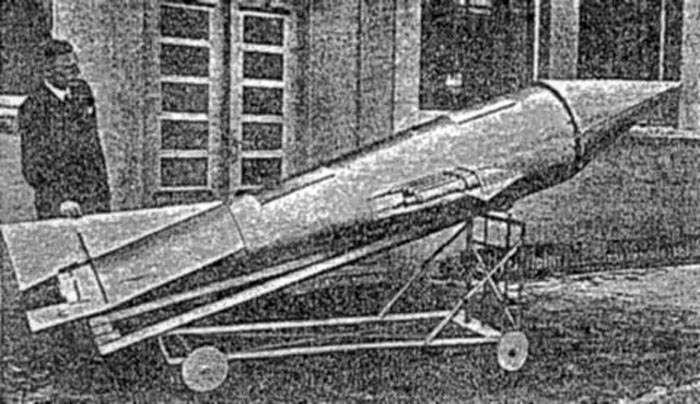
Gerhard Zucker with an advertising rocket of the 1933 model of the year. Photo Astronautix.com
It is known that the elementary powder rockets were used not only for testing, but also for advertising. Repeatedly G. Zucker launched rockets to the public, telling her about his plans. He described in paints how in the future larger and heavy rockets would appear that could carry postcards, letters and even packages or packages on board, and then fly to the desired city. Advertising test launches were carried out in different cities and towns, but until a certain time the inventor did not travel outside his native district.
Tests and simultaneous advertising campaign lasted about two years. During this time, the inventor has studied the necessary areas of science and technology, and also received some experience. Now it was possible to complete the assembly and launch of large-scale layouts and move on to more serious matters. It was necessary to carry out the development of a project based on new ideas, and then build and test a full-fledged postal rocket.
Big rocket and big advertising
In 1933, a new phase of project development and promotion began. G. Zucker built a full-size rocket of a new type, intended for demonstration in different cities. The inventor-businessman was going to carry this product in Germany and look for potential customers or sponsors. It is obvious that a full-fledged rocket, even if it does not correspond to all the declared characteristics, could become a very good advertisement.
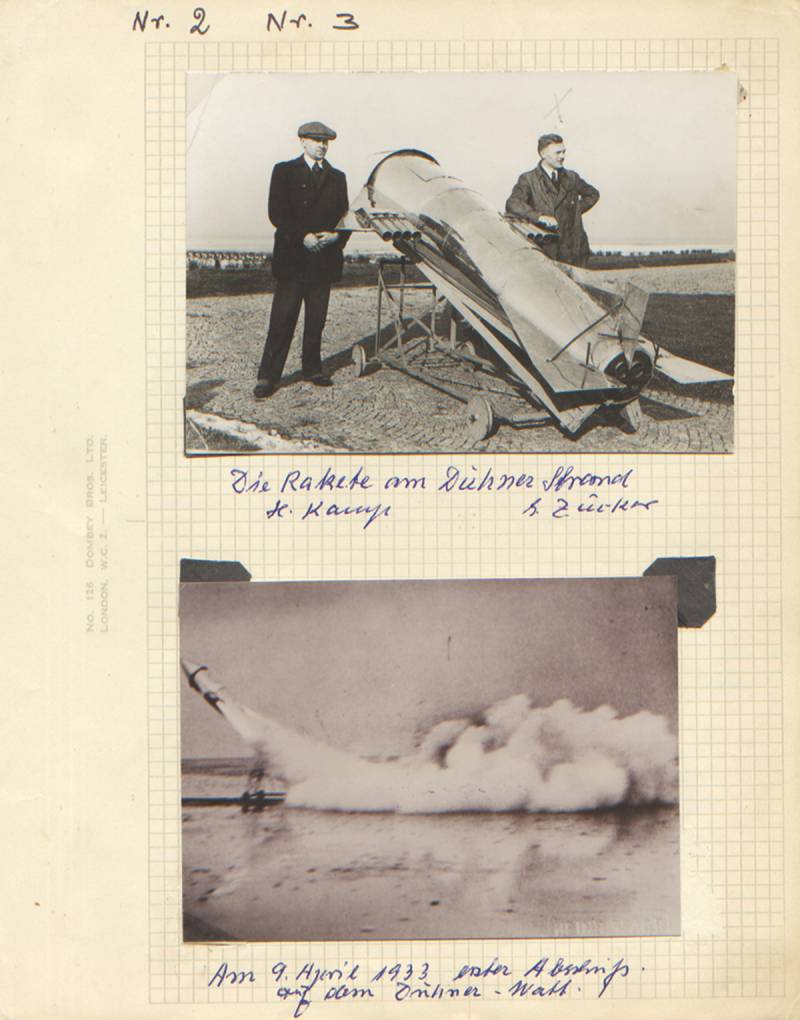
A page from G. Zucker's diary with entries about the launch of 9 on April 1933. At the top - the inventor (on the right) and his rocket, at the bottom - the rocket at the moment of launch. Photos of Cabinetmagazine.org
The first version of the full-size mail rocket had a curious design. The missile had a body with a pointed conical head fairing and a gently tapering central section. Tail section also carried out in the form of a truncated cone. In the tail were the triangular planes of the stabilizer. According to the project of Zucker, on the sides of the hull were fixed plane-wings, on which eight compact powder engines were installed - four each. Four more such products were in the tail of the case. All the rest interior space rocket could send a payload.
The rocket of the first version had a length of about 5 m and a maximum diameter of about 50-60, see. The starting mass was set at the level of 200 kg, and eight powder engines gave the total thrust in 360 kg. In fact, this product was an unguided rocket, capable of flying only along a ballistic trajectory and only with preliminary guidance.
For transportation and launch of the rocket was created towed cart with a wheel travel. She placed a pair of longitudinal rails, installed at a fixed angle of elevation. For the correct launch of the rocket and some increase in the accuracy of shooting, the guides were proposed to be coated with technical grease.
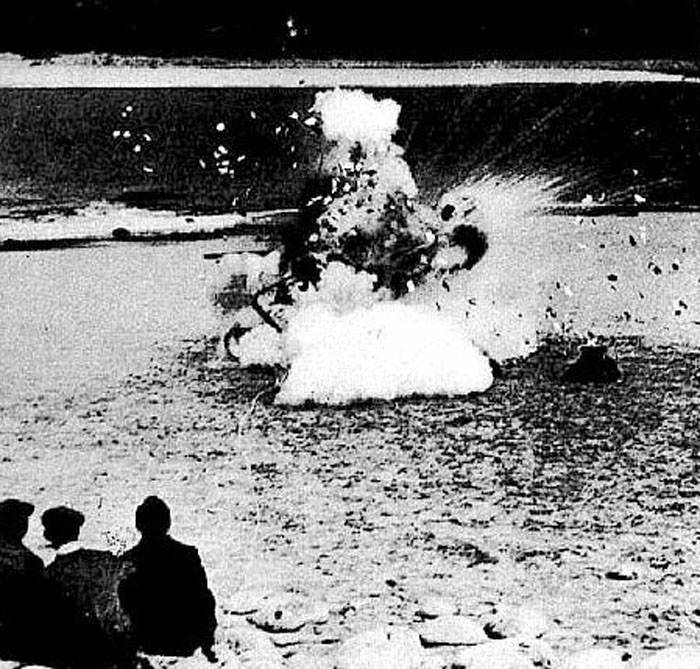
Rocket explosion near the launcher. You can observe the expansion of correspondence. Photo Astronautix.com
In his speeches, G. Zucker argued that, based on the results of further development of the existing structure, it will be possible to get a transport rocket that can climb 1000 m, accelerate to 1000 m / s, deliver cargo to the distance to 400 km, and then return to the launch site . A rocket with such capabilities could be used as a bomber, a reconnaissance aircraft or a supplier of various cargoes, such as mail. It is not difficult to guess that the transformation of a simple rocket with powder engines into what G. Zucker was talking about at that time was simply impossible.
At the beginning of 1933, Mr. Zucker began preparations for testing a new rocket. The product and the launcher were delivered to the landfill, which became the North Sea coast near the city of Cuxhaven (Lower Saxony). Tests were scheduled for February, but they had to be postponed. When entering the beach, the launcher, which was not distinguished by high traffic, was stuck in a ditch. They managed to pull it out, but the launch was postponed indefinitely and they began to wait for good weather that does not spoil the roads.
9 April of the long-awaited launch of experimental rockets took place the same year. According to official data, there was a load on board the rocket in the form of a certain number of its own “rocket mail” envelopes. In the presence of the inhabitants and leaders of Cuxhaven, the inventor gave the command to start the engines. The rocket descended from the guide with a characteristic noise, rose to a height of 15 m and fell to the ground. When falling, the product collapsed and exploded. The actual range was ridiculous, and future of the project was called into question. However, the reputation of G. Zucker almost did not suffer. He continued the advertising campaign. In addition, he began selling envelopes with stamps that allegedly survived the death of an experienced rocket.
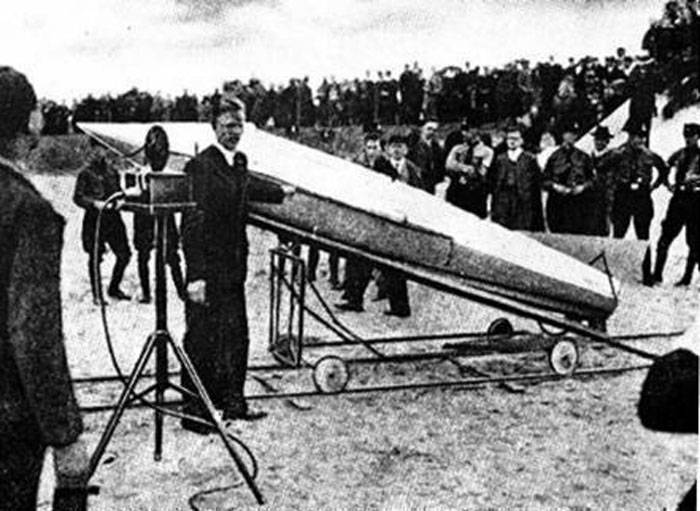
G. Zucker demonstrates his missile to the Nazi leadership of Germany. Photo Astronautix.com
After several months of promotional travel and improvement of the project G. Zucker turned to the new Nazi leadership of Germany. In the winter of 1933-34, he showed officials a new version of a rocket capable of carrying different payloads. From the unsuccessful experienced rocket, the new product differed in other dimensions and the absence of stabilizers. In addition, it lost its side wings: the engines now fit only in the tail section of the hull.
As the inventor later said, Nazi officials were not interested in a mail or transport rocket - they were more interested in the warhead carrier. But G. Zucker refused to create such a modification of the rocket. As a result, the project did not receive government support, and its future again became uncertain.
British period
After several failures in his homeland, Gerhard Zucker decided to leave for the UK. Perhaps this decision was connected with financial problems or with pressure from the new authorities. One way or another, as early as May 1934, envelopes from the detonated rocket became exhibits at the London airmail exhibition. By participating in the exhibition, the inventor wanted to interest the British postal administration and get the necessary support to continue the work.
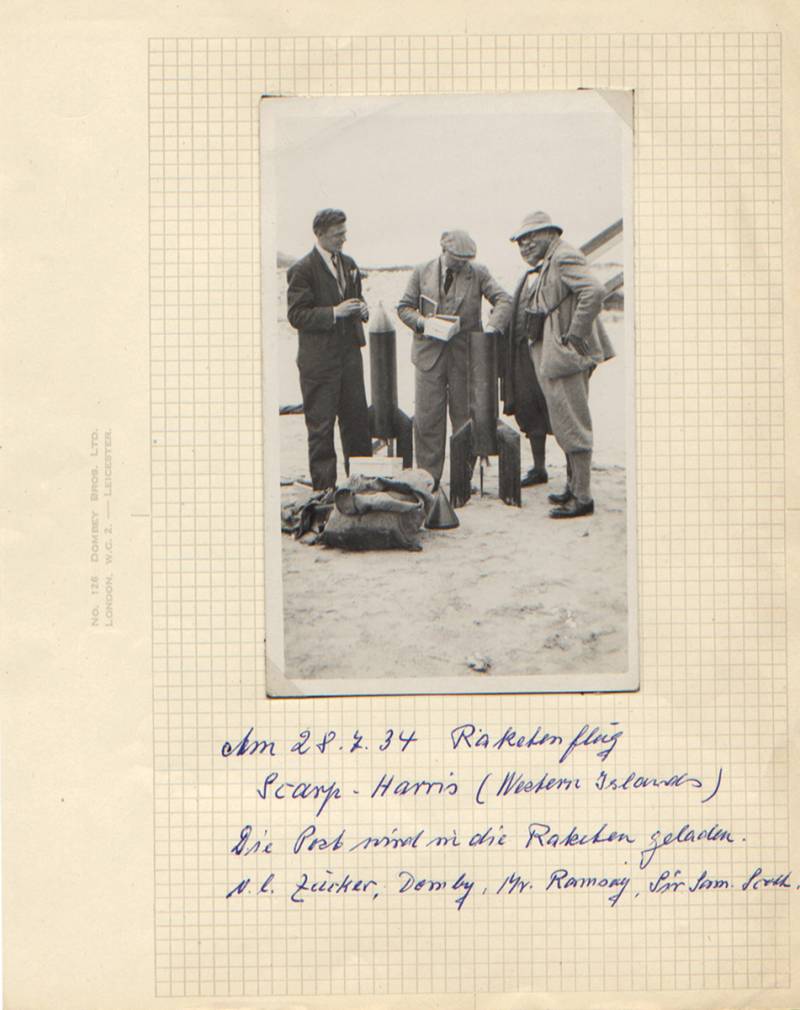
Mr. Zucker (left) and his colleagues are preparing a rocket for launch, July 28, 1934. Photos by Cabinetmagazine.org
A government agency was not interested in the idea of rocket mail, but it attracted the attention of private individuals. Rich philatelist and trader brands K.Kh. Dombrowski wished to finance the project. Photographer Robert Hartman volunteered to provide advertising and publication in the press. The company as part of the inventor, sponsor and photographer planned to launch the operation of new mailing rockets and earn a lot of money on this.
However, this undertaking immediately faced serious difficulties. The project of G. Zucker provided for the use of powder engines and lubricants produced in Germany. By that time, Germany had stopped exporting such products, and enthusiasts could not purchase them legally. To obtain the necessary materials would have to arrange a real espionage operation. Not having access to the original components used in the first projects, the inventor was forced to use what he managed to get in the UK.
In the shortest possible time, the German enthusiast produced several new prototypes of a mail rocket based on British-made materials and resources. At the same time he had to improvise. For example, instead of inaccessible German grease on the guides used cheap butter. The new version of the special missile was similar to the original, but different dimensions. The total length of the product was only 1070 mm with the case diameter 180 mm. The powder engine had a cylindrical copper body, covered with asbestos on the outside. Assembled, this device had a length of 55 cm and a diameter of 6 cm. After installing such an engine in the rocket body, there was enough space for the payload.
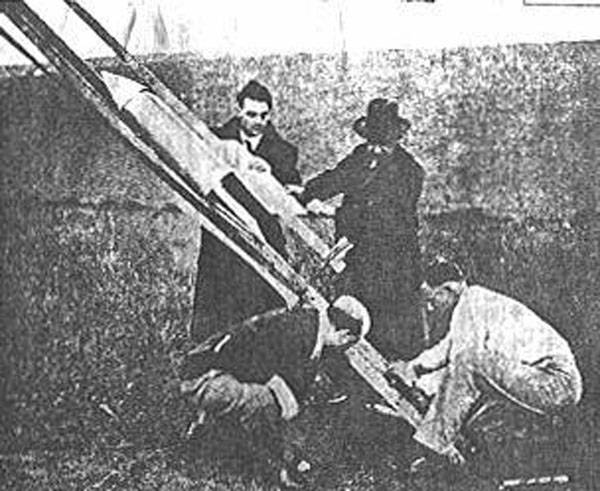
"British" rocket before launch. Photo Astronautix.com
With the rocket it was proposed to use a simple launcher with a pair of parallel guides covered with improvised lubricant. Guides could be induced in two planes. The chassis was missing, but it was not required because the installation was easy and could be carried on hands.
6 June 1934, rocket mail developers and journalists arrived at the site, which was one of the hills in the south of Sussex, on the banks of the English Channel. Enthusiasts deployed the launcher and performed the first launch of the rocket without payload towards the sea. Then two rockets, filled with envelopes and postcards with appropriate marking, went on the flight. The range of flight of compact and light rockets with a low-powered engine ranged from 400 to 800. The missiles were able to be lifted out of the water, thanks to which new items appeared in Mr. Dombrowski’s philatelic shops.
The very next day in the British press appeared sensational reports about the first national rocket mail system. Such news attracted the attention of citizens and probably had a good effect on sales of envelopes, postcards and stamps. However, G. Zucker and his comrades wanted not only to sell philatelic materials, but also to cooperate with the state mail. Wanting to interest the Royal Postal Service, they argued that the future rockets of their design could deliver shipments from Dover to Calais in just a minute!
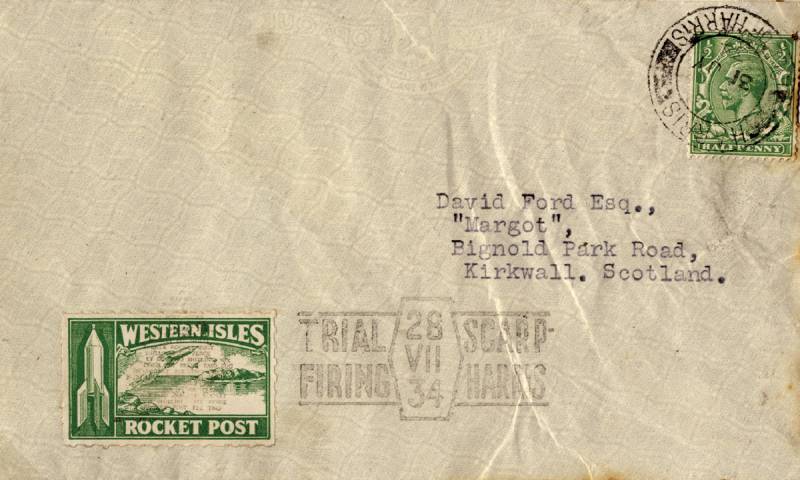
One of the envelopes present on board the missile for the Scarp-Harris flight. Post Office printed a small batch of special stamps (bottom left). Photos of Cabinetmagazine.org
July 28 held a demonstration of an experienced rocket to representatives of the postal department. The Hebrides became a testing ground for new "firing". Launch pad organized on the shore of. Scarp; rocket mail waiting on about. Harris To solve this problem, the rocket was to fly 1600 m over the strait between the islands. A rocket similar to that tested at the beginning of June in Sussex was used. She had a length of just over a meter and was equipped with a powder engine. Free hull volumes were filled with "correspondence". The rocket was packed with 1200 envelopes marked “rocket mail”. An interesting fact is that all these products have already been sold on the system of pre-orders. Immediately after the test, they had to go to the customers.
Upon command from the control panel, the rocket turned on the engine, and almost immediately after that an explosion occurred. The rocket's hull collapsed, and burning envelopes scattered across the beach. Some of them were saved and collected for transfer to customers.
G. Zucker considered that the cause of the accident at the start was a defective engine. It was his wrong job that led to an explosion and a breakdown of the demonstration tests. However, such conclusions did not affect the future fate of the project. The Royal Postal Service saw an unsuccessful launch and its results, after which it refused to cooperate with enthusiasts. Rocket mail in the proposed form was considered unsuitable for use in practice.
Return to Germany
The rocket explosion at the end of July made noise in every sense. His most serious consequence was the investigation against G. Zucker. The German businessman was considered a security threat to the UK. In addition, he, according to officials, was a danger to the local postal service. British internal affairs agencies expelled the inventor back to Germany and banned him from entering.
At home, the unfortunate designer was met with suspicions. German intelligence services suspected him of collaboration with the British intelligence. The investigation found no evidence of espionage, and G. Zucker remained at large. At the same time, he was forbidden to continue work in the field of rocket technology. Hitler's regime, as it seemed, put an end to stories curious rocket mail project. However, before the official ban appeared, the inventor managed to make several new launches. There are known philatelic materials dated 1935 year.
In 1936, Mr. Zucker became a defendant in a fraud case. The Hamburg District Court found that after 1934, new launches were not launched in Germany. Collection materials, dated April 1935, never took off on a rocket. They were made and immediately sent for sale - solely from the desire to earn. According to the verdict of the court, G. Zucker had to serve a sentence of one year and three months, and also pay a fine in 500 Reichsmarks. Such news shook the German philatelic community.
A few years later, Gerhard Zucker was drafted into the army, and he went to the front. In 1944, he was seriously wounded, and after the hospital he went home to Hasselfeld. Soon after the war ended, the businessman decided to move to Lower Saxony, which later became part of the Federal Republic of Germany. Based on a new location and opening a furniture store, G. Zucker again engaged in the assembly of home-made rockets. It was again about compact and light vehicles for transporting small loads, such as letters and postcards. From time to time the inventor went to the designated site, and executes a startup. Some new missiles carried envelopes with special marks.
In May, the International Congress of Philatelists, organized by German and French collector organizations, took place in Hanover, Hannover. At the start of this event, it was planned to launch several mail missiles with the corresponding payload. 1964 in May G. Zucker and the organizers of the congress organized a launch position on Mount Hasselkop near Braunlage and prepared ten rockets for launch that loaded 7 thousand envelopes with special blanking. Look at the flights came 10 people.
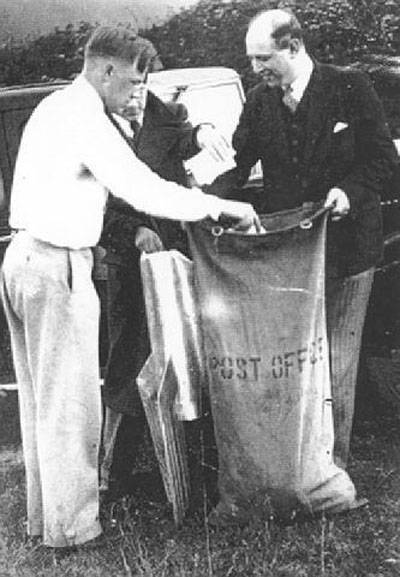
Unloading mail from the surviving rocket. Probably a post-war snapshot. Photo Astronautix.com
The first rocket flew several tens of meters and collapsed, scattering the load on the ground. The second one exploded just 4 meters from the rail. A piece of the hull in the form of an 40-centimeter pipe flew towards the spectators, who were only 30-35 standing meters away from the launcher. Three people were seriously injured. The event was stopped, and the program of the congress was significantly changed. 11 days after the accident, one of the wounded died. A few days later, the second victim died. The third survived, but remained disabled.
The internal affairs authorities immediately opened a case on the fact of murder and injury to health due to negligence. After several months of investigation, the prosecutor's office of the Federal Republic of Germany abandoned the charges against G. Zucker, but came up with several important initiatives. Firstly, the operation of powder rockets without a rigid attachment of the engine in the housing was prohibited. There was also a requirement that viewers should not approach the launch pad closer than on 400. Personally, the inventor was forbidden to launch any rockets, since a fatal violation took place during the fatal launch. In accordance with current regulations, as a private individual, he could build and launch products weighing up to 5 kg, and products for the congress weighed 8,3 kg.
The tragedy at the festive event had more serious consequences. Soon, the leadership of Germany adopted a new law, according to which individuals and organizations that do not have proper permission cannot assemble and launch missiles of all classes. Several children, youth and sports-technical organizations suffered from such a decision of the authorities. In addition, several sites for rocket sports were closed.
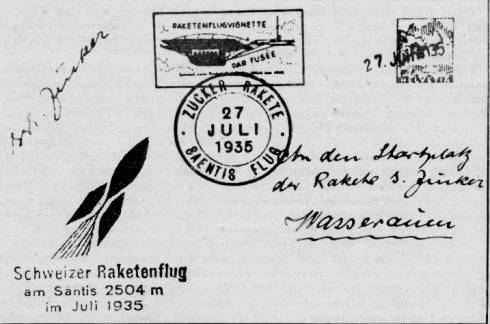
Envelope 1935 of the year, made a flight on one of G. Zucker's missiles. Photo Filatelist.narod.ru
Mr. Zucker no longer built or launched rockets, and, according to some, stopped all theoretical research. However, this did not prevent him from making money on the topic of rocket mail. In the seventies, he produced and sold off a batch of philatelic materials allegedly transported on board a postal rocket. At the same time, no rocket existed, and envelopes and stamps were in fact counterfeit.
After the ban of the authorities, the inventor enthusiast focused on the main business and family. He passed away in 1985 year. After the unification of the Federal Republic of Germany and the GDR, the family of the inventor returned to her native Hasselfeld.
***
After the first successful experiments of F. Schmid, many "got sick" with the idea of rocket mail and began to create their own versions of such systems. A very interesting version of the mail rocket was proposed by the German enthusiast Gerhard Zucker. It should be noted that the history of its development is similar not only to an attempt to create a fundamentally new complex, but also to the story of an adventure novel. From a certain point of view, the whole idea of G. Zucker looks like another useless project, the purpose of which was self-promotion and making money on a relevant topic.
However, almost all projects of rocket mail were created at a special time, when not only scientists and designers, but also real dreamers participated in the development of technology and technology. And any crazy idea had a chance to be implemented for the benefit of humanity. Unfortunately, G. Zucker's mailing rockets in all their versions did not meet the expectations of their creator, the tragedy put an end to the series of projects.
Based on:
http://astronautix.com/
http://isleofharris.com/
http://postalheritage.org.uk/
http://cabinetmagazine.org/
https://physik.cosmos-indirekt.de/
http://filatelist.narod.ru/
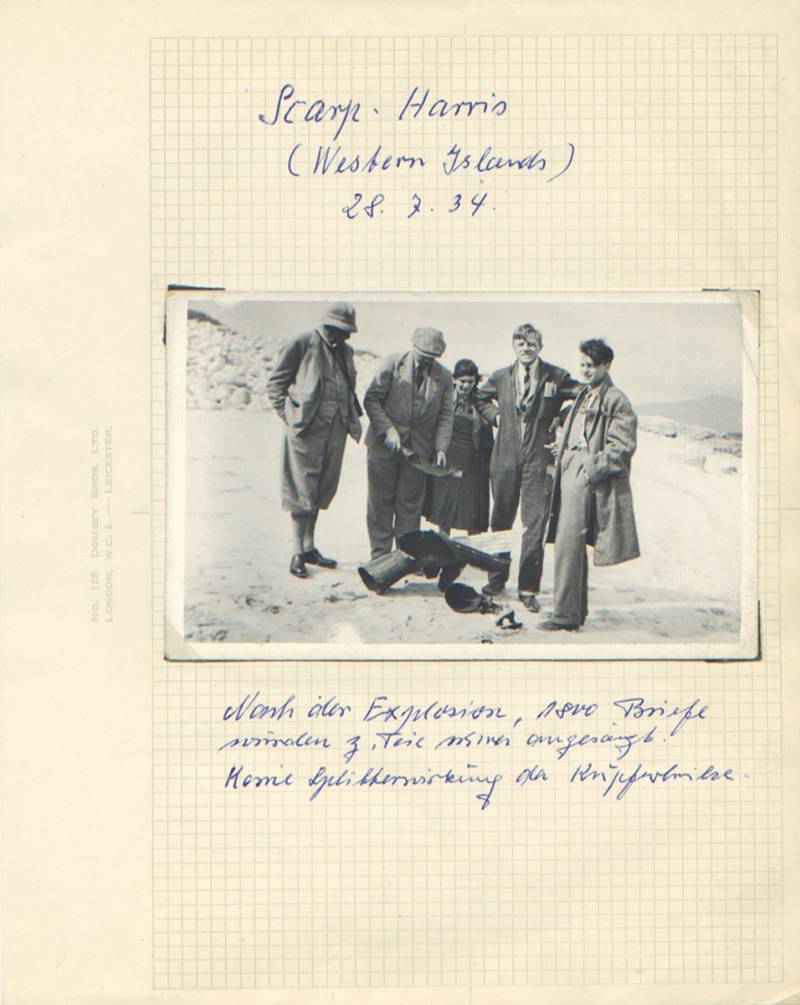
Information